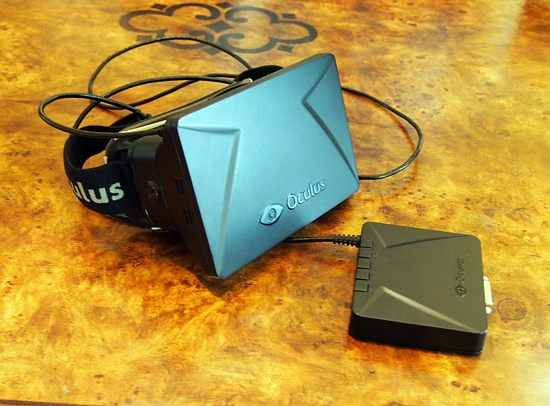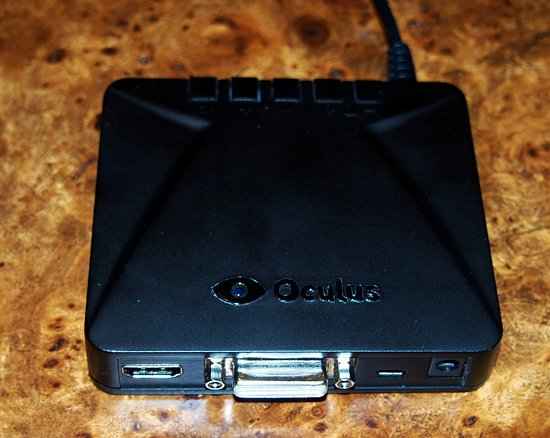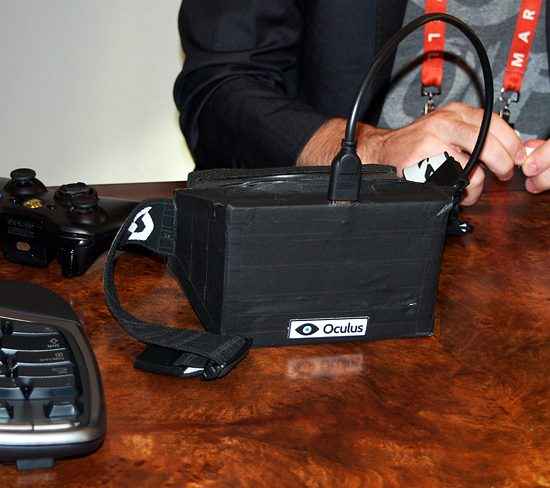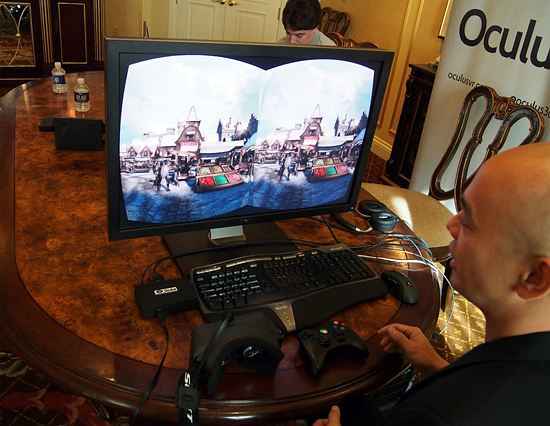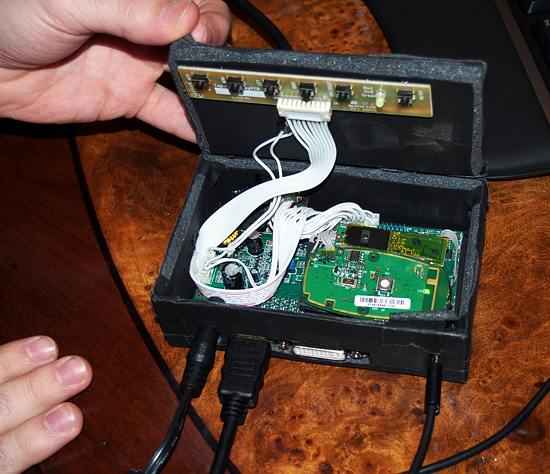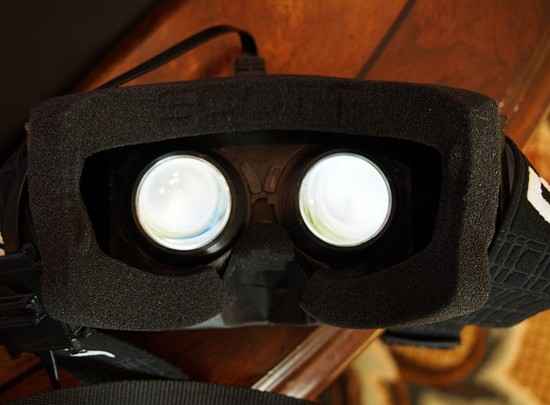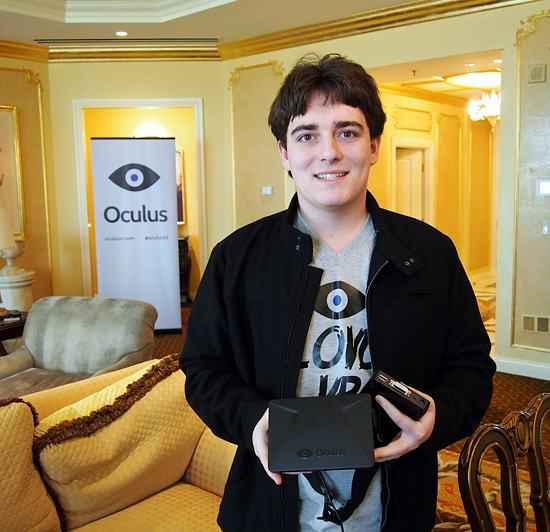CES 2013: Hands on with the Oculus VR Rift, virtual reality’s greatest hope
I spent some time and got a little dizzy with the impressive Oculus VR Rift head-mounted display.
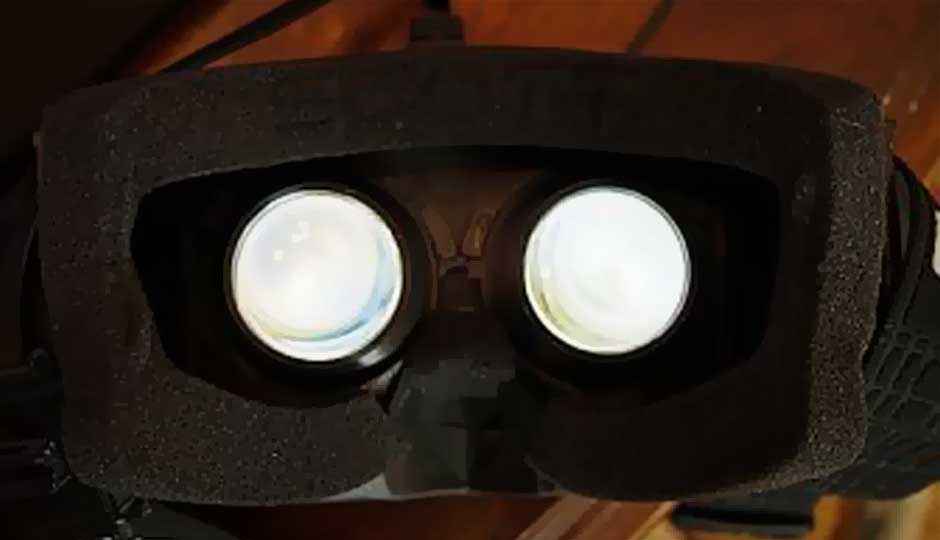
LAS VEGAS – I don't know if I've seen the future of virtual reality, but I do know I've seen its best chance in decades of amounting to anything. This renewed hope comes from the Oculus Rift from Oculus VR, and my short time playing with it has convinced me that it can make first-person games immersive to an unforeseen extent.
 Survey
SurveyVirtual reality has long seemed like a dead concept. The idea of putting on bulky goggles and virtually exploring places was huge in the 90s, but has since given way to augmented reality and using your smartphone's camera to feed you information. As a child, I was a devout follower of VR, and I dreamed of some day putting on a ridiculous helmet and exploring virtual worlds like someone from VR.5. Incidentally, this probably marks the first time in approximately 15 years anyone has ever mentioned VR.5, a thirteen-episode show from 1995 that arguably started Anthony Head's American television career.
Cut to 2013, and a suite in the Venetian at which Oculus VR had two prototype Oculus Rift devices set up. The Oculus Rift looks like a callback to 90s-era VR displays, with a giant visor that straps to your head and blocks out all outside light. Even the prototype development version, built of molded plastic instead of a foamcore shell, looks almost hilariously bulky. These aren't video glasses you can put on during a flight to watch a movie. These are virtual reality goggles, the likes of which I've dreamt of using to play video games since I was a kid.
Oculus Rift – The prototype developer kit of the Oculus Rift, manufactured and ready for connection.
My guides from Oculus VR strapped the goggles to my head and put an Xbox 360 controller in my hand so I could try the "citadel" demo, a look at how the game Infinity Blade can work on the Oculus VR. As soon as the Oculus Rift was fitted securely to my head, I found myself standing in a small medieval village. Guards in armor and carrying large weapons walked by, seemingly ignoring me as snow fell from the sky.
It wasn't quite realistic, but that was only because of the limits of the Unreal Engine and not the Oculus VR itself. Snowflakes fell before my eyes with perceivable depth from my face. I walked around the guards and saw their huge swords shift as I stepped, seeming like they were inches from cutting me. Even shutters on a window popped out at my face and I walked around them to see tangible depth. When I got very close to objects, it felt like I was close, and that they were inches from my eyes.
Oculus Rift Box – The goggles are run by this controller box, which accepts HDMI and DVI input. .
This is where the seams in the demo showed, because the textures of things like the stone walls and wooden shutters appear completely flat without advanced bump making, pixel shading, and other effects, so it looked more like I was staring at a house that was wallpapered to look like it was made of stone and wood. Again, this is the software's fault, not the hardware's. Considering this was just a demonstration of what the Oculus Rift can do, I was impressed.
Early Oculus – Before prototypes were manufactured, Oculus VR built these initial goggles with foamcore and electronics components.
After the 3D effect of the Oculus Rift, the head tracking provided the most sense of immersion. I didn't just see objects with depth, I saw them as if I was looking at them with my own eyes. The Oculus Rift tracked every movement of my head as I looked around, tilting and shifting the picture appropriately. I found myself watching a snowflake fall from the sky and moving my head to follow it. I looked from high above my head down to the ground as the snowflake fell. I couldn't see my feet or any other part of my body, but, again, this is a software issue. The effect was still incredible.
Demo Computer – The images shown on the Oculus Rift are displayed in side-by-side 3D on this monitor to show developers what the user is seeing.
The Citadel demo was the most detailed, but it wasn't interactive. That's why Oculus VR prepared another demo that put me in the action. I played a modified version of Unreal Tournament 3 that incorporated the Oculus Rift's head-tracking into the gameplay. The effect was incredibly immersive, making me aim with both my thumbs and my head to get bots in my non-existent sights. There were no displays in the game, which meant no reticle or health information. Again, this was just a proof of concept demo, and while I learned to aim with my head quickly, real games for the Oculus Rift will have to balance aiming and head-tracking and incorporate a reticle in the display.
Inside the Box – A look at the internals of the box that drives the early Oculus Rift.
After I took off the Oculus Rift, I found myself disoriented for a few moments. This was because the head tracking was so accurate in the demos, switching between real and virtual reality was jarring. The effect was so immersive that my brain really felt like I was there on some level, because the display followed how I looked at things normally. It might have also been that the straps on the Oculus Rift were a little tight, so my head felt slightly tingly because I effectively had a very large, padded rubber band around it for several minutes.
Through the Eyes – The googles of the Oculus Rift don't have finalized specifications yet, but the demonstration pair I used had 720p resolution.
Oculus VR is getting ready to ship developer kits, but the Oculus Rift is a long way from hitting stores. While the technology is there, the combination of stereoscopic vision and head-tracking means games need to be built for the Oculus Rift with the device in mind, and that means experimentation and perfecting the interface. Things that work in standard first-person games don't work when you have an immersive 3D picture with head tracking, and motion sickness is a problem that must be tiptoed around. Still, it's an impressive display even at this early stage. If enough game developers get onboard, we could see a new resurgence of virtual reality as a "future" technology thanks to the Oculus Rift.
Oculus Founder – Palmer Luckey, creator of the Oculus Rift, with a prototype device.
Copyright © 2012 Ziff Davis Publishing Holdings Inc
